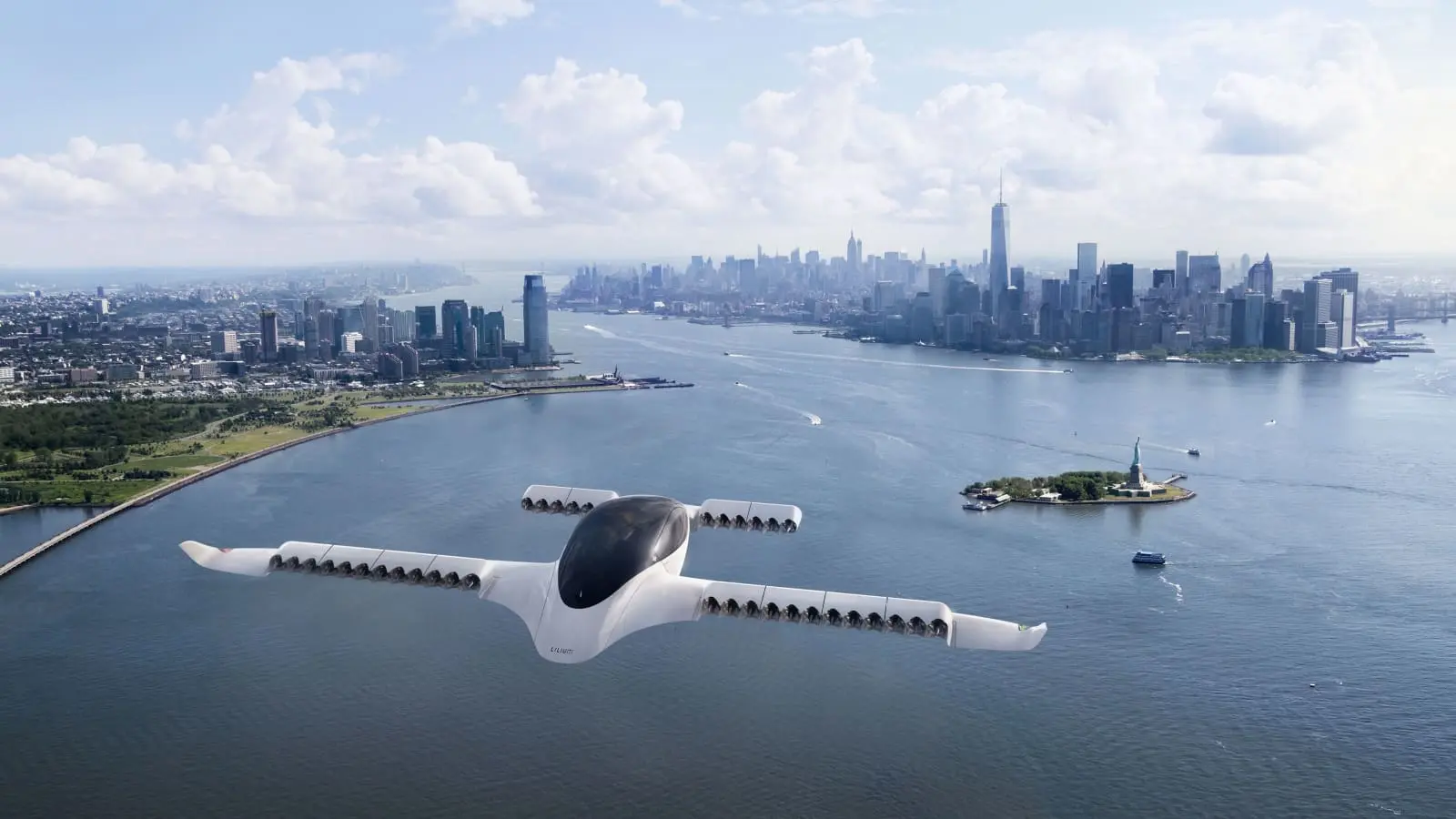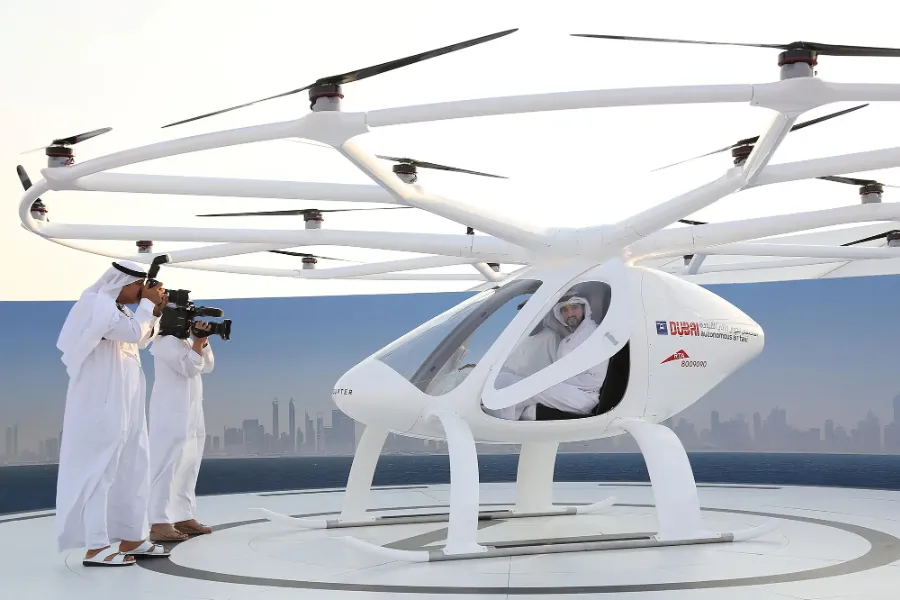Flying cars in dubai, The Fascinating World of Flying Cars
This future is emerging in Dubai, a city known for innovation and bold development, which is now welcoming flying taxis as a major step toward urban air mobility.
In 1903, when the Wright brothers achieved the first controlled human flight, they could hardly have imagined a future where people would soar across cities in flying taxis, reaching their destinations in just minutes. That 12-second flight sparked more than a century of innovation in the skies. Today, we’ve entered an era where aviation is no longer limited to intercity travel—it’s now being designed for everyday urban transportation. Flying taxis are no longer a fantasy; they are rapidly becoming a serious part of the future of mobility.
Along this journey, visionaries like Elon Musk have played pivotal roles. Although Musk hasn’t built a flying taxi, his groundbreaking work in electric vehicles, artificial intelligence, and space travel has inspired a wave of trust and investment in future-focused technologies. Tesla, SpaceX, and the Hyperloop tunnel projects all share a common vision: to completely transform transportation and improve human life.
Introduction: The Fascinating World of Flying Taxis and Investor Concerns
Now, this future isn’t just taking shape in Silicon Valley or Shanghai—it’s emerging right in the heart of the Middle East, in a city like Dubai. For years, Dubai has been a symbol of innovation and bold development, with cutting-edge infrastructure and forward-thinking policies. And now, by welcoming flying taxis into its skies, Dubai is taking a major step toward urban air mobility.
At the same time, many of our clients at Dar Al Tharwa have expressed concerns. As they witness these technological advances, they ask:
"How can we benefit from this tech-driven wave? Can we secure a stake in the future, or will we just be spectators?"

These concerns are entirely valid. Emerging technologies always come with uncertainty—opportunity and risk are two sides of the same coin. But if you understand the path ahead, you can step in at the right time with confidence and take part in extraordinary growth.
That’s exactly why, at Dar Al Tharwa, we’ve prepared this article—to explain in simple terms how flying taxis can be viewed not just as a fascinating innovation, but as a future-shaping investment opportunity. In the following sections, we’ll explore entry strategies, risk levels, and real-world success stories.
This is just the beginning. The future is already here.
Across the globe, countless individuals have built wealth and transformed their lives by recognizing and investing in the world’s emerging opportunities.
Flying cars and other breakthrough technologies are among these golden opportunities—ones that could reshape your financial future.
In 2026, Dubai will officially begin using flying taxis for passenger transport.
Test Flight of Flying Taxis in Dubai : The Future Has Arrived from the Skies
On June 30, 2025, Dubai once again captured the world’s attention—a city long recognized for leading technological innovation. On this day, the first successful test flight of a flying taxi took place in Dubai’s skies, marking a historic milestone not only for the city but for the entire Middle East.
The flight was conducted under the direct supervision of Sheikh Hamdan bin Mohammed, Crown Prince of Dubai, a strong advocate of emerging technologies and the advancement of urban air mobility. He has consistently emphasized the importance of leveraging technology to enhance quality of life in Dubai, and this test flight showcased the government's commitment to sustainable development and forward-thinking innovation.
These flying taxis are based on cutting-edge eVTOL (electric Vertical Take-Off and Landing) technology, enabling fast, quiet, and emission-free travel. Unlike traditional vehicles, flying taxis can take off and land from almost anywhere in the city—without the need for runways.
Imagine this: the drive from Dubai International Airport to the iconic Palm Jumeirah typically takes around 45 minutes. With flying taxis, that same trip can be completed in under 10 minutes. Or consider a daily commute from Dubai Marina to the downtown core—often plagued by heavy traffic—now possible in just a few minutes, entirely traffic-free.
Leading companies like Joby Aviation and Archer Aviation are at the forefront of developing this technology, and the first pilot route has been planned between Dubai International Airport and major high-traffic urban zones.
This test flight wasn’t just a technical experiment—it was a demonstration of Dubai’s full readiness to embrace this new mode of transportation. The city is actively working on building specialized Vertiports (takeoff and landing stations), enacting safety regulations, and training professional pilots.
Dubai aims to become the first city to officially and widely implement intra-city aerial transport. This successful test is a promising step toward a future where the skies become highways for everyday travel—eliminating the need to waste hours stuck in traffic.
But how can we invest in this emerging industry?
What kind of returns can investments in such technologies offer, and how much capital is needed to enter these markets?
Investing in Megatrends
Megatrends are large-scale, long-term forces that profoundly impact the economy, society, technology, and the environment. These trends typically unfold globally and have the power to shape the future of investment, business, and everyday life.
For example, Tesla was once a megatrend at its inception. Years ago, Apple was considered a megatrend during its rise. Many of today’s game-changing technologies began as megatrends. If you’ve seen the film Forrest Gump, you’ll remember how investing in Apple—then a young megatrend—could have turned a modest sum into significant wealth.
So, how can we take advantage of such opportunities today?
Capital Allocation and Risk Management in Megatrend Investing
One of the key principles of successful investing is effective risk management and smart capital allocation. This is especially critical when it comes to emerging megatrends like flying taxis and urban air mobility. At Dar Al Tharwa, we consistently advise our clients to align their investments with their individual risk tolerance—and never to commit essential or life-sustaining capital to high-demand, high-risk sectors.
Every Individual Has a Unique Risk Profile
Each person has a distinct financial risk tolerance, shaped by factors like age, income, assets, financial goals, investment horizon, and even personality. For example, a 25-year-old with a steady income and minimal financial responsibilities might afford to allocate a larger share of their capital to emerging technologies. In contrast, a 55-year-old nearing retirement who depends on their savings for future living expenses must take a much more conservative approach.
Don’t Put Your Core Capital at Risk
One of the most important pieces of advice we give at Dar Al Tharwa is this: never invest your essential funds—such as emergency savings, housing money, or critical living expenses—into high-risk areas. These funds should always be placed in low-risk, liquid assets to ensure your financial security. Investing in megatrends and emerging technologies like flying taxis should only be done with surplus capital that you can afford to lose.
Investing in megatrends is inherently high-risk. While it can be a source of great wealth, it can also lead to significant financial losses if not managed carefully.
Smart Allocation to Megatrends
Our experience at Dar Al Tharwa shows that allocating 5% to 15% of your overall portfolio to high-growth assets and emerging megatrends is the most reasonable and intelligent approach. This range allows investors to benefit from the growth potential of such technologies while maintaining overall portfolio stability.
Think of megatrends as fuel for portfolio growth—but they should never be the only investment source. The right balance between safe assets like government bonds, shares of stable companies, and higher-risk opportunities is key to long-term financial health.
Important: Never invest without sufficient knowledge.
Dar Al Tharwa’s Experience with Megatrends and Tesla
Several years ago, many of our clients at Dar Al Tharwa made small, targeted investments in Tesla, back when the company was still not widely known in public markets. These investments represented a small portion of their overall portfolios, but they were strategically positioned. The result? Those clients have now seen significant gains from that smart, early decision.
At the same time, this experience also demonstrates a key risk: over-investing in megatrends or emerging technologies can be dangerous. Some investors, driven by excitement, commit a large share of their capital to these sectors. When markets fluctuate heavily—as they often do in early-stage industries—such investors may suffer substantial losses.
That’s why at Dar Al Tharwa, we consistently emphasize a measured, disciplined approach.
Key Tips for Risk Management in Investing
- Diversify Your Portfolio: Never put all your capital into one sector or industry.
- Continuously Monitor and Update: Reassess your investments regularly based on market changes and technology trends.
- Seek Professional Advice: Working with expert financial advisors is essential to making the right investment decisions and managing risk effectively.
Investing in Flying Taxi Technology and Other Technological Megatrends
Investing in groundbreaking technologies like flying taxis presents exciting opportunities for financial growth and long-term returns. However, due to their emerging nature and associated risks, such investments require careful planning, risk management, and portfolio balance. Every investor should decide based on their personal situation and risk tolerance, always prioritizing the protection of core capital.
Summary: How to Invest in the Flying Taxi Industry
Investing in next-generation technologies like flying taxis offers great potential, but it demands strategic insight. As we’ve discussed, proper capital allocation, risk awareness, and understanding your individual risk profile are crucial to success in this space.
But here’s the key question:
How can you find and invest in companies active in the flying taxi sector and other technological megatrends?
How to Identify Megatrend Stocks
Finding stocks linked to innovative technologies and megatrends isn’t always easy. It requires market knowledge and awareness of global trends. Companies like Joby Aviation, Archer Aviation, and Lilium are already publicly traded on major international exchanges. However, many investors miss these opportunities due to lack of familiarity or restricted access to global markets.
For those who prefer a more diversified and accessible approach, Exchange-Traded Funds (ETFs) focused on emerging technologies can be an excellent option. These funds spread the risk across multiple companies and provide exposure to megatrends without requiring direct stock picking.
Investing in ETFs that include megatrend exposure is often a more logical and lower-risk strategy.
Dar Al Tharwa’s Role in Your Investment Journey
At Dar Al Tharwa, our advisors are here to guide and support you every step of the way. With our expertise in international markets—especially across the Middle East—we help you identify the best investment opportunities and build a balanced, goal-oriented portfolio based on your financial objectives.
Understanding megatrend markets and identifying companies with sufficient stability and growth potential is one of our team’s specialties. We're by your side in all types of investment decisions.
Many of our clients—especially expatriates who may lack full awareness of international markets or megatrend opportunities—have greatly benefited from our guidance. We help them enter these markets with confidence and clarity, and reap the rewards of informed investing.





